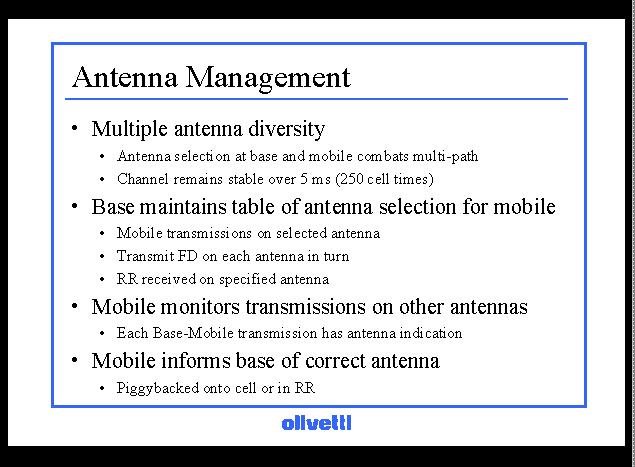 |

|

|

|

|
 |

|

|

|

|
Physical layer uses multiple antenna diversity to reduce multipath fading problems. We believe that with a small number of antennas and appropriate selection of source and destination antenna we should be able to acheive good performance.
Measurements of the channel suggest that the indoor channel at 5GHz remains stable over a time-scale of around 5ms this equates to 250 cell times at 25Mbit/s. The antenna selection mechanism must be able to respond within this time period.
The base station maintains a table of the antenna selection for each mobile. Each transmission from the base indicates the antenna on which it is transmitted, each transmission from a mobile includes the preferred antenna which the base should use.
In the normal case, due to the reservation mechansim, the base station knows which mobile will be transmitting or receiving and therefore which antenna it should use.
In the case of the Frame Descriptor - all mobiles must be able to receive it and it is therefore transmitted on each antenna in turn.
Each reservation request is received on the antenna specified in the frame descriptor. The antenna is chosen randomly or heruistically
Each base station transmission includes the antenna on which it is transmitted. The mobile can therefore monitor receptions on antennas other than the one which it is currently using.
The mobile builds up an array of the link qualities of the various antenna pairs. This is then used to generate the antenna selection messages in the up-stream direction.
The mobile informs the base-station of the correct antenna either by piggybacking the antenna request onto an up-stream transmission or by transmitting in an appropriate reservation request slot if the currently selected base antenna cannot be used.